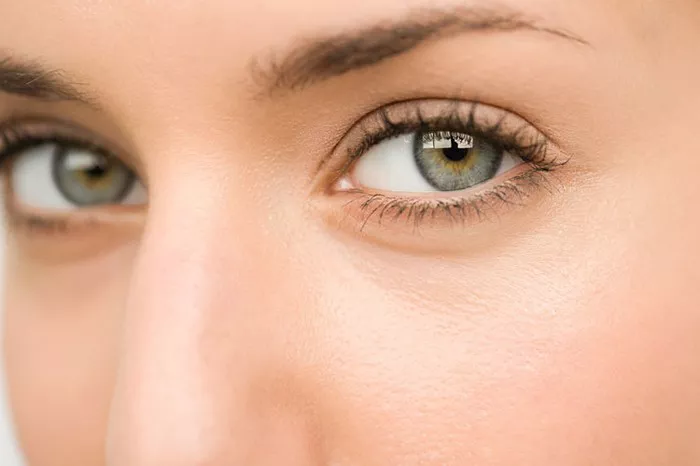Lower blepharoplasty is a cosmetic surgery procedure that is used to remove excess skin, fat, and muscle from the lower eyelids. While the procedure can provide significant improvements to the appearance of the lower eyelids, it is common for patients to experience swelling and bruising after the surgery. In this article, we will provide a comprehensive guide on how long swelling can last after lower blepharoplasty, including the causes of swelling, tips for reducing swelling, and what to expect during the recovery process.
Causes of Swelling
Swelling is a common side effect of lower blepharoplasty and can be caused by a number of factors, including:
Trauma to the tissues during surgery
Fluid accumulation in the tissues
Inflammation
Blood accumulation in the tissues
The extent and duration of swelling can vary depending on the individual and the extent of the procedure. In general, patients can expect to experience some degree of swelling and bruising for several days to several weeks after the surgery.
Swelling Timeline
The timeline for swelling after lower blepharoplasty can vary depending on the individual and the extent of the procedure. Here is a general timeline for what to expect during the healing process:
Days 1-3: Immediately following the procedure, patients can expect significant swelling and bruising around the eyes. Cold compresses can be used to help reduce swelling, and pain medication may be prescribed to manage any discomfort.
Days 4-7: Swelling and bruising will begin to subside, but patients may still experience some degree of swelling and bruising. Patients may be able to return to work or other normal activities at this point.
Days 8-14: Swelling and bruising will continue to decrease, and patients may begin to see the results of the procedure. However, it is still important to avoid any strenuous activities and to continue to take care of the incision sites.
Weeks 3-4: Swelling and bruising should be minimal at this point, and patients should be able to resume all normal activities. However, it is important to continue to take care of the incision sites and to avoid any activities that could cause injury.
Months 2-3: The final results of the procedure should be visible at this point, and patients can enjoy their new, refreshed appearance.
It is important to note that the timeline for swelling can vary based on individual factors such as age, health, and the extent of the procedure. Patients may experience a shorter or longer recovery time than the general timeline provided above.
Tips for Reducing Swelling
Here are some tips for reducing swelling after lower blepharoplasty:
Use cold compresses: Cold compresses can help to reduce swelling and bruising. Patients should apply cold compresses to the affected area for 20 minutes at a time, several times a day.
Keep the head elevated: It is important to keep the head elevated, even while sleeping, to help reduce swelling.
Take prescribed medications: Patients should take any prescribed medications as directed by their surgeon, including pain medication and antibiotics.
Avoid strenuous activities: Patients should avoid any strenuous activities, such as exercise or heavy lifting, for several weeks following the procedure.
Eat a healthy diet: Eating a healthy diet can help to promote healing and reduce swelling. Patients should eat plenty of fruits and vegetables, lean protein, and whole grains.
Following these tips can help to reduce swelling and promote a smooth recovery from lower blepharoplasty.
What to Expect During the Recovery Process
During the recovery process, patients can expect some degree of swelling and bruising around the eyes. The incision sites may be red and slightly raised, but this should subside over time. It is important to keep the incision sites clean and dry to prevent infection, and to avoid any activities that could cause injury. Patients should also expect to attend follow-up appointments with their surgeon to ensure that they are healing properly and to address any concerns or complications.
In addition to swelling and bruising, patients may also experience dry eyes, blurred vision, and sensitivity to light during the healing process. These symptoms are generally temporary and should subside over time. If these symptoms persist or worsen, it is important to contact your surgeon immediately.
Complications and Risks
While lower blepharoplasty is generally a safe and effective procedure, there are some risks and complications that patients should be aware of. These can include:
Infection
Bleeding
Scarring
Dry eyes
Vision changes
Eyelid asymmetry
It is important to discuss these risks with your surgeon prior to the procedure and to follow all post-operative instructions carefully to minimize the risk of complications.
Conclusion
Lower blepharoplasty is a cosmetic surgery procedure that can provide significant improvements to the appearance of the lower eyelids. While swelling and bruising are common side effects of the procedure, following the tips for reducing swelling and understanding the recovery timeline can help to ensure a smooth and successful recovery. Patients can expect some degree of swelling and bruising for several days to several weeks after the surgery, but these symptoms should subside over time. By understanding what to expect during the recovery process and following the post-operative instructions provided by their surgeon, patients can enjoy the full benefits of lower blepharoplasty with minimal complications.


